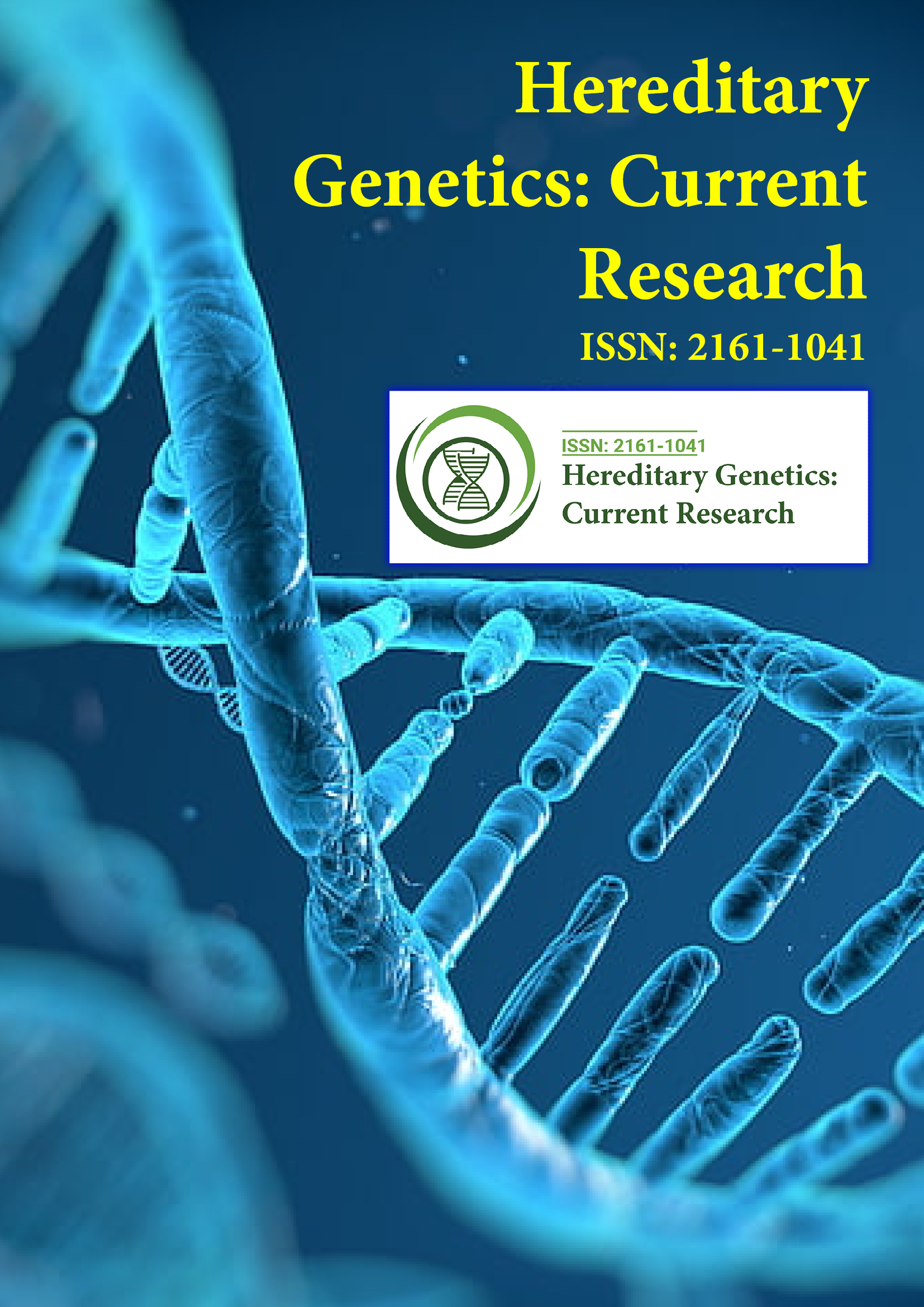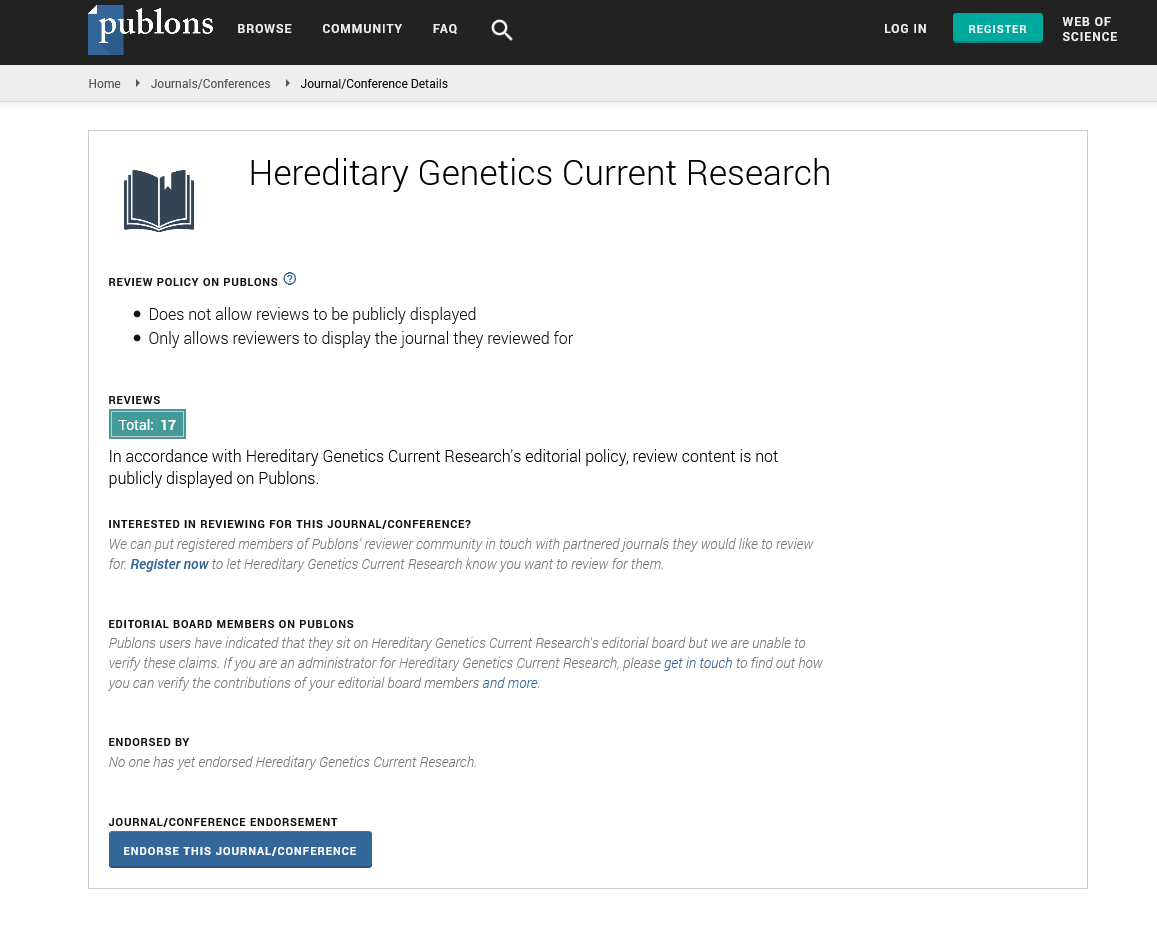Indexed In
- Open J Gate
- Genamics JournalSeek
- CiteFactor
- RefSeek
- Hamdard University
- EBSCO A-Z
- NSD - Norwegian Centre for Research Data
- OCLC- WorldCat
- Publons
- Geneva Foundation for Medical Education and Research
- Euro Pub
- Google Scholar
Useful Links
Share This Page
Journal Flyer

Open Access Journals
- Agri and Aquaculture
- Biochemistry
- Bioinformatics & Systems Biology
- Business & Management
- Chemistry
- Clinical Sciences
- Engineering
- Food & Nutrition
- General Science
- Genetics & Molecular Biology
- Immunology & Microbiology
- Medical Sciences
- Neuroscience & Psychology
- Nursing & Health Care
- Pharmaceutical Sciences
Commentary - (2021) Volume 10, Issue 6
A Brief Description of Epigenetics
Teruhiko Imamura*Received: 02-Nov-2021 Published: 23-Nov-2021, DOI: 10.35248/2161-1041.21.10.205
Description
Epigenetics is the study of how cells regulate gene activity without altering their DNA sequences. "Epi" means more than Greek, and "epigenic" stands for factors that go beyond the genetic code. Epigenetic changes are changes in DNA that regulate whether a gene is on or off. These alterations are attached to the DNA and do not change the sequence of DNA building blocks. Within the complete set of DNA in a cell (genome), all modifications that regulate gene activity (expression) are called the epigenome. Unlike genetic alterations, epigenetic alterations are reversible and do not alter the DNA sequence, but they can alter the body's construction of the DNA sequence. Gene expression refers to the frequency or timing of protein production from instructions within a gene. Gene changes can change which proteins are made, but epigenetic changes affect gene expression, turning genes on and off. Since the environment and behavior such as diet and exercise can cause epigenetic changes, the relationship between genes and behavior and the environment is easy to understand. Epigenetics changes with age as part of normal development and aging, and depending on behavior and environment. Epigenetic changes affect gene expression in a many of ways.
DNA Methylation
DNA Methylation works by addition of chemical groups to DNA. This group is usually added to a specific point in the DNA that blocks the protein that binds to the DNA to "read" the gene. This chemical group can be removed through a process known as demethylation. Usually methylated "off" genes and demethylated "on" genes.
Histone-modified
DNA wraps a protein called histone. DNA wrapped that is tightly around histones cannot be accessed by proteins that “read” the gene. Some genes are wrapped around histones and turned "off", while others are wrapped around histones and turned "on". You can add or remove chemical groups from the histones to change whether the gene is unpacked or packaged (“on” or “off”).
Non-coding RNA
DNA is used as a guide for producing coding and non-coding RNA. Coding RNA is used in the production of proteins. Noncoding RNAs help in control of gene expression by attaching to the coding RNA along with specific proteins and breaking down the coding RNA so that it cannot be used to make the protein. Non-coding RNAs can also mobilize proteins to modify histones and turn genes "on" or "off."
Epigenetics and Development
Epigenetics changes begin before birth. All cells carry the same gene, but they look and behave differently. In the further stages of growth and development, epigenetics helps determine what function a cell has, for example, whether it is a cell in the heart, nerves, or skin. For example, muscle cells and nerve cells have the same DNA but different functions. Nerve cells carry information to other cells in the body. Muscle cells have structures that support the movement of the body. Epigenetics allows muscle cells to "switch on" genes, making proteins important for their work, and "switching off" genes that are important for the work of nerve cells.
Citation: Imamura T (2021) A Brief Description of Epigenetics. Hereditary Genet. 10:205
Copyright: © 2021 Imamura T. This is an open access article distributed under the terms of the Creative Commons Attribution License, which permits unrestricted use, distribution, and reproduction in any medium, provided the original author and source are credited

